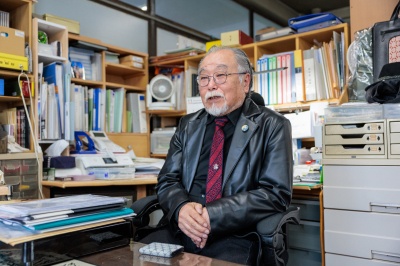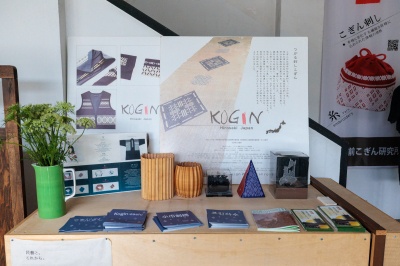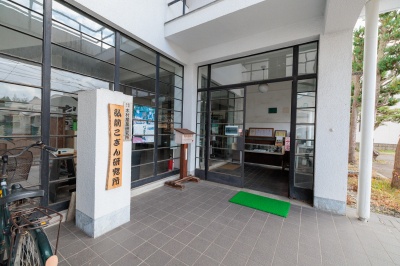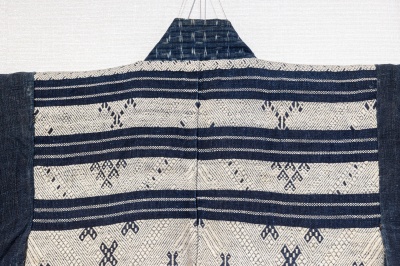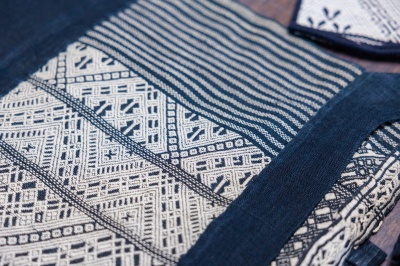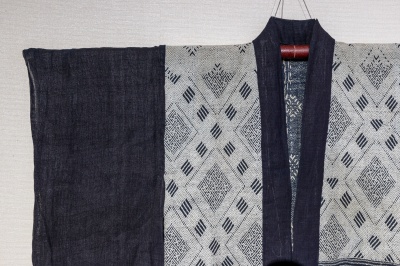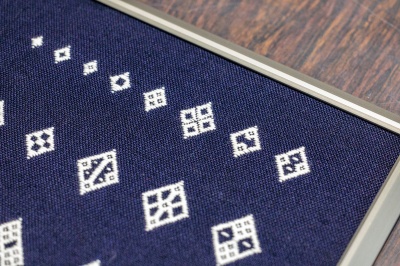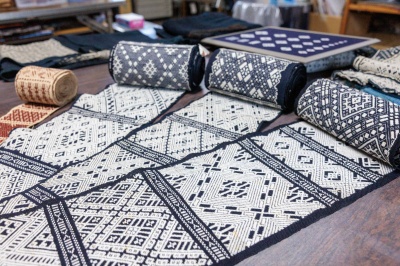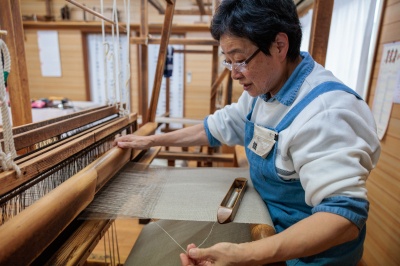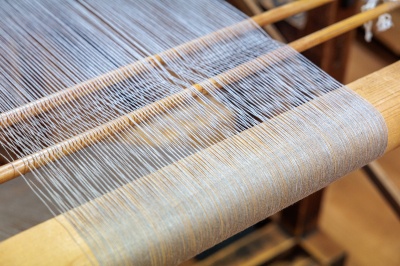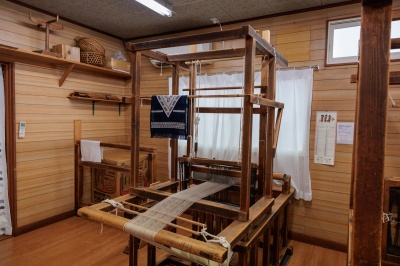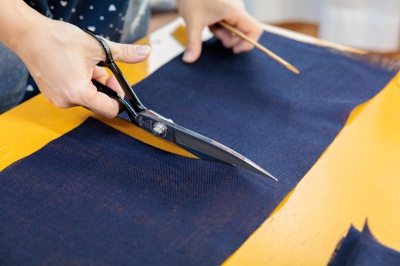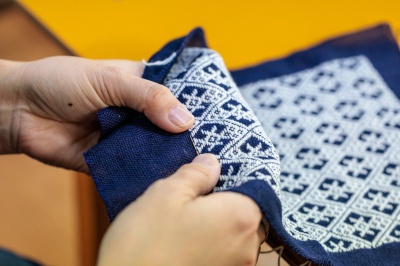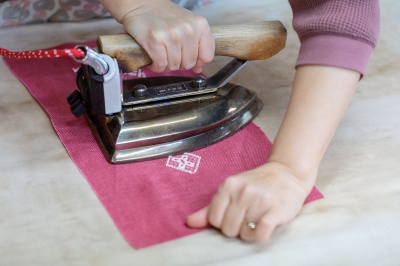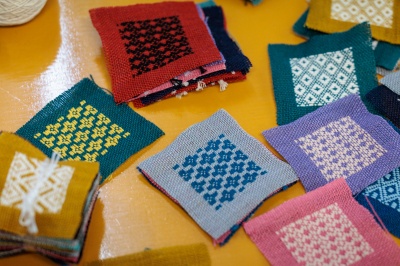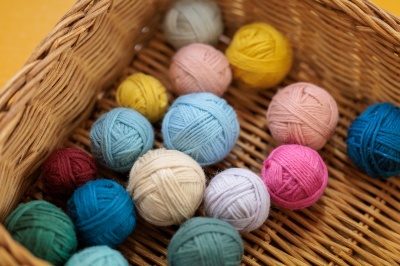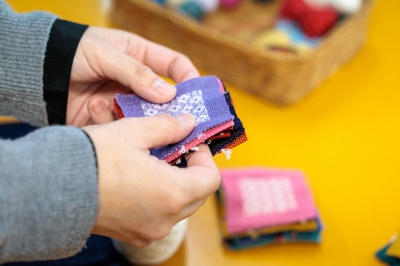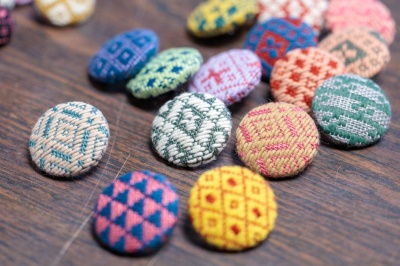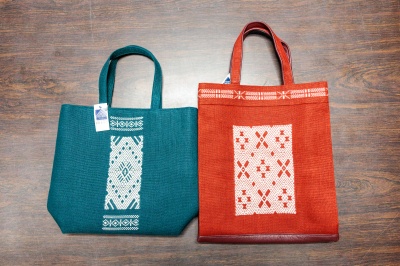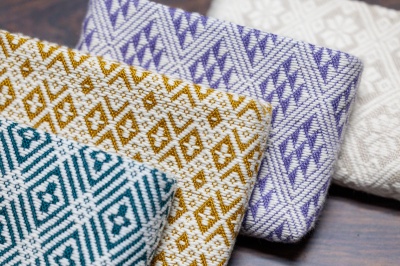Tsugaru Kogin-zashi embroidery featuring the unique beauty of traditional materials and techniques
Handcrafts imbued with warmth created in the cold Tsugaru region
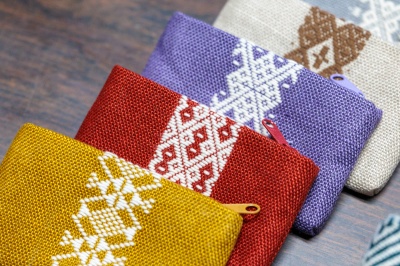
Kogin-zashi embroidery is a traditional handicraft of Aomori Prefecture. Here is an introduction of this embroidery, which is also a wise way to endure severely cold weather.
Sashiko embroidery culture created amid the harsh cold of winter
The Hirosaki Kogin Institute, located in Hirosaki City, is engaged in everything from product development to sales with the aim of creating business and passing on the culture of Kogin-zashi embroidery. Sadaharu Narita, the third head of the Institute, works to convey the charms of Kogin-zashi embroidery to the public while continuing the research on the embroidery which the Institute began in 1942.
Narita explains, “Kogin was originally a term used throughout Japan to refer to short work clothes made of linen, similar to a short Hanten coat. In the Tsugaru region, the term Kogin-zashi embroidery came to be used to refer to the stitching on those work clothes.”
During the Edo period, farmers in Tsugaru were allowed to wear only clothing made from linen. It is believed that in order to keep warm in the cold of winter and to reinforce the cloth, the farmers began to embroider indigo-dyed linen cloth with thick cotton threads, which gradually gave rise to the unique geometric patterns of Tsugaru Kogin-zashi embroidery.
Kogin-zashi embroidery in Tsugaru of Aomori Prefecture, Hishizashi embroidery in southern Aomori Prefecture, and Shonai Sashi embroidery in Yamagata Prefecture are referred to as the three major types of Sashiko embroidery in Japan. Sashiko culture developed in various regions, especially in the Tohoku region where winters are severely cold.
Kogin-zashi embroidery is done by counting the warp threads in odd numbers, such as 1, 3, and 5, to create a series of vertical rhombus-shaped patterns. This is said to be very rare.
Kogin-zashi embroidery has about 40 basic patterns known as Modoko, which are combined to create dynamic geometric designs. Each Modoko has its own name, such as Mameko, Hanako, and Neko no Managu (which means “cat’s eye” in the local Tsugaru dialect). These names were used to pass down the stitching techniques from one person to another.
The Hirosaki Kogin Institute has accumulated about 600 different stitch samples created by combining Modoko. The colors of the cloth and threads are combined while being conscious of not altering the traditional patterns, creating one-of-a-kind Kogin-zashi embroidery items.
The process of creating Kogin-zashi embroidery
Kogin-zashi embroidery is made by stitching cotton thread on linen cloth. Some of the obi sashes at the Hirosaki Kogin Institute are made from hand-woven cloth, and there is a loom to weave the cloth from linen threads. There is only one artisan who can handle the loom, but younger artisans are studying so that the technique is passed down.
Usually, the products are cut from linen cloth using scissors to fit each product’s size. Threads tend to fray when cloth is cut, but cloth cut straight along the warp threads is less likely to fray. This is a technique that can only be achieved with the skills of artisans.
After deciding on the design to be stitched on the cloth, the needle is carefully inserted for each row of stitches. When all the stitches have been added to the row, the needle is pulled out, resulting in a white thread added to the dark blue cloth. You can imagine how hard it was to make a warm jacket stitch by stitch in this manner, although it was a wise way to survive the Tsugaru winters.
After stitching, the fabric is carefully ironed and stretched to ensure that there are no wrinkles. This step is said to make a difference in the beauty of the finished product. A very heavy iron, which has been utilized at the Hirosaki Kogin Institute for many years, is used to firmly stretch the fabric to its full size.
Currently, the Hirosaki Kogin Institute has about 120 stitchers as registered members. These members include farmers, housewives, and other people of all ages, and there are usually about 30 members working on Kogin-zashi embroidery projects. The tradition of Kogin-zashi embroidery based on Modoko patterns is maintained by having the members apply stitches on cloth of a predetermined size with a predetermined design plan.
Kogin-zashi embroidery products are not finished simply by adding the embroidery to cloth. After the fabric is embroidered, it is sewn to transform it into various products such as bags, pouches, and buttons. About 10 sewing specialist members conduct the sewing by hand to enhance the value and quality of the products (some sewing is done outside of the prefecture).
Kogin-zashi embroidery products are recommended as traditional craft souvenirs
Recently, there has been an increase in colorful and cute Kogin-zashi embroidery products that incorporate traditional patterns. In addition to small accessories like bags, pouches, and Fukusa cloths used when wearing Japanese clothing, there are also ventures for collaborations involving interior décor and furniture. Moreover, there are efforts to promote Aomori’s traditional culture of Kogin-zashi embroidery to the world, including actively presenting at overseas exhibitions.
Narita says, “We want to preserve the culture of Kogin-zashi embroidery through our handwork.” He says that he hopes to sustain this traditional culture by protecting the environment in which Tsugaru residents can continue to make Kogin-zashi embroidery as a handicraft in the future.
Kogin-zashi embroidery was born from handiwork in the Tsugaru region. Each of the traditional handcrafted items is unique, so if you come across a product you like, be sure to pick it up and take a closer look.
